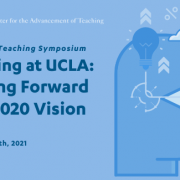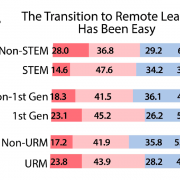A new study published in The Journal of Microbiology and Biology Education’s special edition, “Teaching in the Time of Crisis” looked at the impact of the rapid shift to remote teaching at the start of 2020. Students enrolled in UCLA’s HHMI Health Disparities and Environment Program developed a survey that was administered to students during the Spring 2020 quarter. Survey findings indicated that there were significant disparities in remote learning that disproportionately impacted underrepresented minority (URM) and first-generation students.
Another unique aspect of this paper comes from the research project itself, which was a novel course-based research experience (CURE) for students in the HEDP. Traditionally, CUREs are bound by a need to have lab space. This study showed that it is possible to scale up access to CUREs even in the context of remote instruction. As one student noted, “a lot of us were…upset a little bit…that we weren’t going to be able to go out into the field, but I think that kind of turned into, like, excitement because…we started to do COVID research, especially because that’s…really relevant now” (p. 18). The study and resulting publication were led by Professor Paul Barber with the assistance of researchers at the Center for Educational Assessment (CEA), including Casey Shapiro, Molly Jacobs, and Marc Levis-Fitzgerald. Additionally, 14 undergraduate students and two graduate students were involved throughout the process, further demonstrating the potential for engaging students impactfully in research experiences.
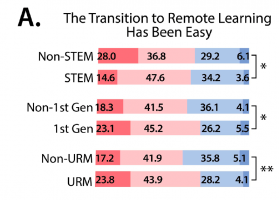
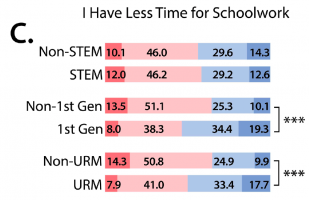

Figure 1. Responses to two of the questions from the remote instruction survey show significant differences between: 1st Generation and non-1st Generation students and URM and non-URM students.
The full article can be accessed here: https://www.ncbi.nlm.nih.gov/pmc/articles/PMC8046656/.


